
All categories
Featured selections
Trade Assurance
Buyer Central
Help Center
Get the app
Become a supplier

(68 products available)





















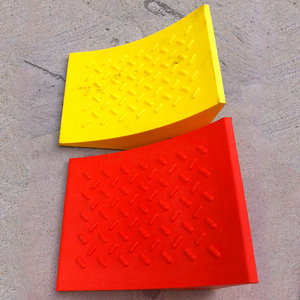

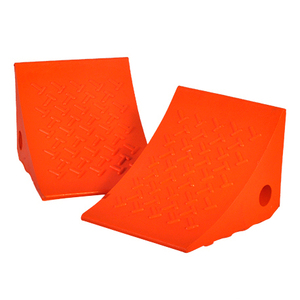






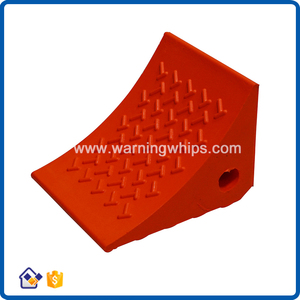

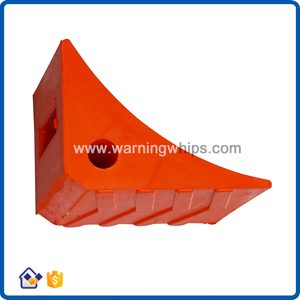


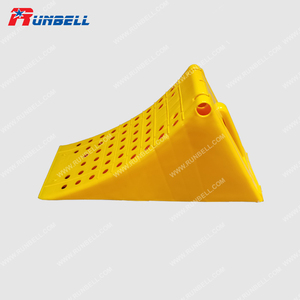




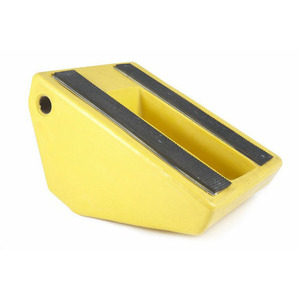
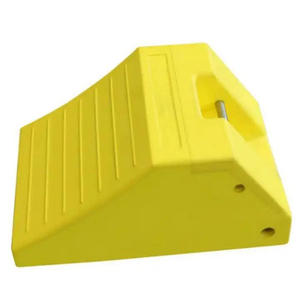



Big chocks, also known as large equipment chocks, are wedges placed alongside the tires of heavy equipment to prevent accidental movement. They are commonly used in the mining, aviation, and construction industries, where the equipment's size and weight make unintentional rolling or sliding a significant hazard. Big chocks are typically made from robust materials like rubber, metal, or composite materials and are designed to withstand the harsh conditions of industrial environments. There are several types of big chocks, each suited to specific applications and equipment types.
Wheel Chocks for Heavy Trucks and Trailers
These are specifically designed to prevent large trucks and trailers from rolling when parked or during loading and unloading. They are usually made of durable materials like reinforced rubber or heavy-duty plastic, which can withstand the significant weight and force of these vehicles. Some larger versions may incorporate steel elements for added strength and stability.
Aircraft Wheel Chocks
These are used to prevent the rolling of large aircraft during ground operations. Given the potential hazards associated with aircraft movement, these chocks are designed with high-strength materials, typically containing reinforced rubber or aluminum, to provide a secure and reliable stopping mechanism. Their design often includes features such as anti-slip surfaces and bright safety colors for visibility, ensuring they stay in place and are easily seen, reducing the risk of accidents. Additionally, aircraft wheel chocks may come in various sizes and weights to accommodate different types of aircraft, offering tailored solutions for each model's specific needs. Their lightweight and portable nature allows for easy handling and placement, making them essential for ground crew operations.
Mining Equipment Chocks
These are massive, heavy-duty chocks used to prevent large mining trucks and equipment from rolling or moving unexpectedly, which can pose significant hazards in mining operations. Mining equipment chocks are designed with high-strength materials, often incorporating reinforced steel or concrete, to withstand the substantial weight and force of these massive vehicles. Their robust construction ensures stability and security, reducing the risk of accidents and injuries.
Construction Equipment Chocks
These are large, heavy-duty chocks used to prevent large mining trucks and equipment from rolling or moving unexpectedly, which can pose significant hazards in mining operations. Mining equipment chocks are designed with high-strength materials, often incorporating reinforced steel or concrete, to withstand the substantial weight and force of these massive vehicles. Their robust construction ensures stability and security, reducing the risk of accidents and injuries.
There are several types of big chocks, and each type is designed to meet specific applications and needs. Here are some general specifications of big chocks:
Material
Generally, big chocks are made from different types of materials. Each material offers different advantages and features. Some of the common materials used in making big chocks are plastic, aluminum, and steel. Chocks made from steel are known for their strength and durability. This makes them ideal for heavy-duty applications. On the other hand, plastic chocks are lightweight and resistant to corrosion.
Size and Weight
Big chocks are available in different sizes and weights. Usually, the size and weight of the chock will determine its level of application. That is, a heavier and larger chock will offer more stability and support compared to smaller and lighter chocks. Chocks come in different sizes ranging from lengths of 8 inches (20 centimeters) to 12 inches (30 centimeters) or more.
Surface Texture
Big chocks come with different surface textures. The surface of the chocks can be embossed, textured, or patterned. The surface texture is usually important because it offers more grip and traction. This further prevents slippage and accidental movement.
Load Capacity
Big chocks are designed to support different load capacities. The load capacity of the chocks is determined by the material and size. For instance, chocks made from steel can support heavier loads compared to those made from plastic. Big chocks are designed to support load capacities ranging from 2,000 pounds (900 kilograms) to 20,000 pounds (9000 kilograms) or more.
Proper maintenance of big wheel chocks is very important. This is because it helps to enhance their performance and also increase their lifespan. Here are some general maintenance tips for big chocks:
Chock Size vs. Wheel Size
When selecting a proper size chock, consider the size of the wheels on the vehicles to be chocked. A well-sized chock will fill the space alongside the wheel to prevent movement.
Big Chock Shape and Design
Wedge chocks work well for most flat-surfaced areas, as their wedges can grip underneath wheels on concrete, asphalt, or packed ground. However, if the vehicle will be parked on a slope, a more angled or triangular chock can better stop rolling.
Material Considerations
Rubber big chocks provide a good grip in most places due to their textured bottoms. However, if a chock needs to be very heavy to withstand strong forces, metal or composite material chocks can offer more weight and strength.
Environmental Conditions
For outdoor use, choose chocks made from weather-resistant materials like treated wood or coated metals. These will better withstand rain, snow, and UV exposure. In very cold areas, rubber should be used cautiously as it can become brittle.
Size and Weight of Vehicle
For smaller cars and light trucks, 6x9-inch or similarly-sized chocks are usually sufficient. However, for large 18-wheel trucks and freight, much larger chocks measuring 12x24 inches or more should be used to stop movement.
Chocking Technique
Always place two chocks at the rear wheels and two at the front wheels, equally spaced, to fully secure a vehicle both forward and backward. This prevents rolling in either direction. The chocks should fit snugly alongside the wheels without excessive gaps.
Regulatory Compliance
Check local laws about minimum required sizes and materials of chocks for commercial use. Some places have standards for construction, trucking, and other industries to prevent accidents safely.
Storage and Transport
For mobile use, select chocks that are not too heavy for workers to carry. Chocks with handles or tie-down points can be easily transported to job sites. For infrequent use, consider stackable chocks that take up less storage space.
Replacing a large wheel chock is a straightforward process, but it requires careful planning and execution to ensure safety and compliance with regulations. Here's a step-by-step guide on how to replace a big chock:
Inspection
Before any replacement work begins, inspect the current wheel chocks. Check for any signs of wear, damage, or non-compliance with safety standards. This assessment will help determine the need for replacement and inform the selection of a new chock.
Choose the Right Chock
Once the old chock has been inspected, select a new big chock replacement that meets safety standards. The new chock should be in accordance with the type, size, and material specifications to ensure compatibility and effectiveness.
Workplace Safety
Before the replacement process begins, ensure that all safety protocols are followed. Notify all relevant personnel about the replacement work, and make sure the area is clear of any unauthorized personnel. Implement lockout/tagout (LOTO) procedures if necessary to prevent accidental equipment movement during the replacement.
Remove the Old Chock
Carefully remove the old chock, ensuring that the vehicle or equipment remains in a secure position. Use appropriate tools and techniques to avoid causing any damage or compromising safety.
Install the New Chock
Position the new chock behind the tire as per the manufacturer's instructions and relevant safety standards. Ensure it fits snugly without any gaps. The correct placement is essential to prevent accidental slippage or movement.
Secure the New Chock
Depending on the specific chock type and the operational context, additional measures may be required to secure the chock in place. This could include using straps, chains, or other securing mechanisms. Ensure that these measures are applied correctly and securely.
Test and Verify
Once the new chock is installed and secured, conduct a thorough inspection and testing to verify its effectiveness. Ensure that it meets all safety standards and operational requirements. Involve relevant personnel, such as safety officers or maintenance staff, to validate the chock's condition and placement.
Documentation
Document the entire replacement process, including inspections, selections, removals, installations, and verifications. This documentation serves as a record for compliance purposes and can be useful for future reference.
Training and Awareness
Ensure that all relevant personnel are trained in the proper use and maintenance of wheel chocks. Raise awareness of their importance in maintaining safety standards and preventing accidents.
Q1: What are big chocks made of?
A1: Most big chocks are made of high-density polyethylene, also known as HDPE. This material is durable, versatile, and strong, making it ideal for heavy-duty applications. Chocks made from this material are long-lasting and resistant to harsh environments, including chemicals and UV rays. Some big chocks are made of other materials, such as aluminum and steel. These materials offer additional benefits, such as corrosion resistance and increased strength.
Q2: How are big chocks different from other types of chocks?
A2: Big chocks are designed for use with large vehicles, including trucks, buses, and trailers, to prevent movement when parked or stationary. Other types of chocks, like small chocks, are used with smaller vehicles, including motorcycles and bicycles.
Q3: How long do big wheel chocks last?
A3: The lifespan of big wheel chocks depends on various factors, including frequency of use, maintenance, and environmental conditions. Generally, big chocks can last between three to five years. However, chocks that are used more frequently and subjected to heavy wear and tear may need to be replaced sooner.